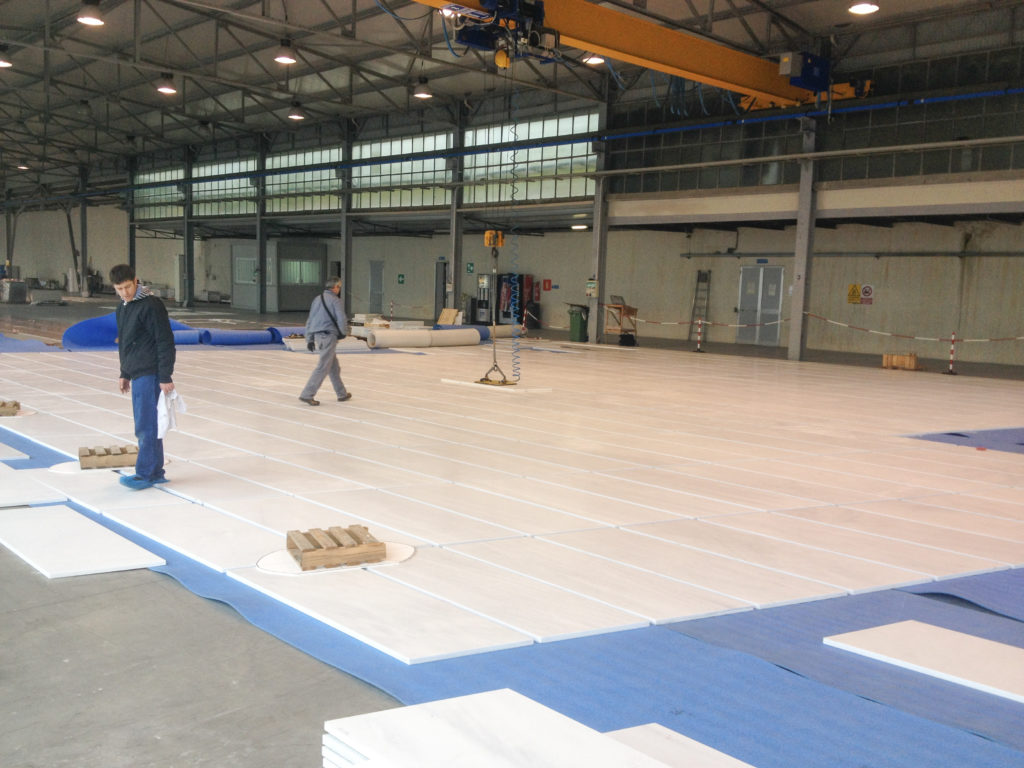How to Work with Veined Stone for the Best Results

Have you ever seen a piece of stone or marble with beautiful, intricate veining and wished you could have something similar? Well, this is how it's done.
Contents
1. Dry Lay and its Benefits
Dry lay is a technique in which tiles or slabs are laid out in a dry setting, without the use of adhesive or grout. This allows you to get a sense of how the final installation will look and to make any necessary adjustments before permanently attaching the pieces.

Fabricators and installers use dry lay to preview small and large scale marble projects. This process allows for the accurate placement of veining and tiles. Dry lay is an important part of the installation process, as it allows for a more efficient and accurate installation.
2. Digital Stone Planning Tools
If you're in the business of designing and installing marble surfaces, then you know how important it is to be able to preview your projects. After all, no one wants to end up with a finished product that doesn't look quite like they envisioned.
Enter digital dry lay. This new software tool allows you to see how different marble slabs will look before you cut any stone. Not only does this save you time and money, but it also allows you to be more creative with your designs.
Discover our Stone Planning Tool
You can experiment with different vein patterns and see how they'll look and play around with different blends of stone to create unique looks. When you're happy with your design, you can request an offer and get exact cutting tickets.
If you're looking for a way to take your marble designs to the next level, then try digital dry lay.
3. Pattern Matching vs Book-Matching
Definition:
- Pattern matching is when the veining is laid out in a repeating pattern.
- Book-matching is when the veining is laid out in a mirror image.
There's a debate in the world of interior design: should you match your stone patterns, or go for a more organic, "book-matched" look? Let's take a closer look at the pros and cons of each approach.
If you're matching your stone patterns, you're creating a cohesive, elegant look. Veining in marble, for example, tends to be fairly uniform, so matching your patterns will give your space a polished, stylish feel.

On the other hand, book-matching your stone can add visual interest and a sense of movement to a space. This approach is especially effective with stones that have more random, organic veining.
Both pattern matching and book-matching have their own unique look and there is no right or wrong choice. It simply depends on your personal preference and what look you're going for in your space.
4. How To Achieve a Natural Looking Stone Installation
One of the most important aspects of achieving a natural looking stone installation is getting the veining right. Veining is what gives stone its unique character and texture, and it's what makes each piece of stone look different from the next.
There are a few things to keep in mind when it comes to veining:
- The size of the veining. Veining can range from very fine to very coarse, and the size of the veining will have a big impact on the overall look of the stone.
- The color of the veining. The color of the veining can also range from very light to very dark, and this will also impact the overall look of the stone.
- The direction of the veining. The direction of the veining is also important, as it can help to create a more natural looking installation.
- The density of the veining. The density of the veining is another important factor, as a more sparse veining will create a more natural look while a denser veining will create a more artificial look.
- The type of stone. The type of stone you use will also impact the look of the veining. Some stones, like marble, have very fine veining while others, like granite, have much coarser veining.
5. Types of Stone with Interesting Veining
 Photo by rawpixel.com - www.freepik.com
Photo by rawpixel.com - www.freepik.comThere are many different types of stone veining, but here are five of the most popular:
- Granite Veins: Granite is a popular choice for countertops and floors because of its durability and unique appearance. Granite veins add interest and depth to the stone, making it even more desirable.
- Marble Veins: Marble is another popular choice for countertops and floors, and like granite, it also has unique veining that adds to its beauty.
- Quartz Veins: Quartz is a great choice for countertops because of its durability and low maintenance. Quartz veins add a touch of elegance to the stone.
- Slate Veins: Slate is a popular choice for countertops because of its beauty and uniqueness. Slate veins add character and interest to the stone.
- Travertine Veins: Travertine is used for floors and walls because of its beauty and durability. Travertine veins add interest and depth to the stone.
Bonus
Marble is a timeless material that can add a touch of luxury to any kitchen. If you're looking for creative ideas for your marble kitchen design, read 10 Creative Marble Kitchen Design Ideas.

